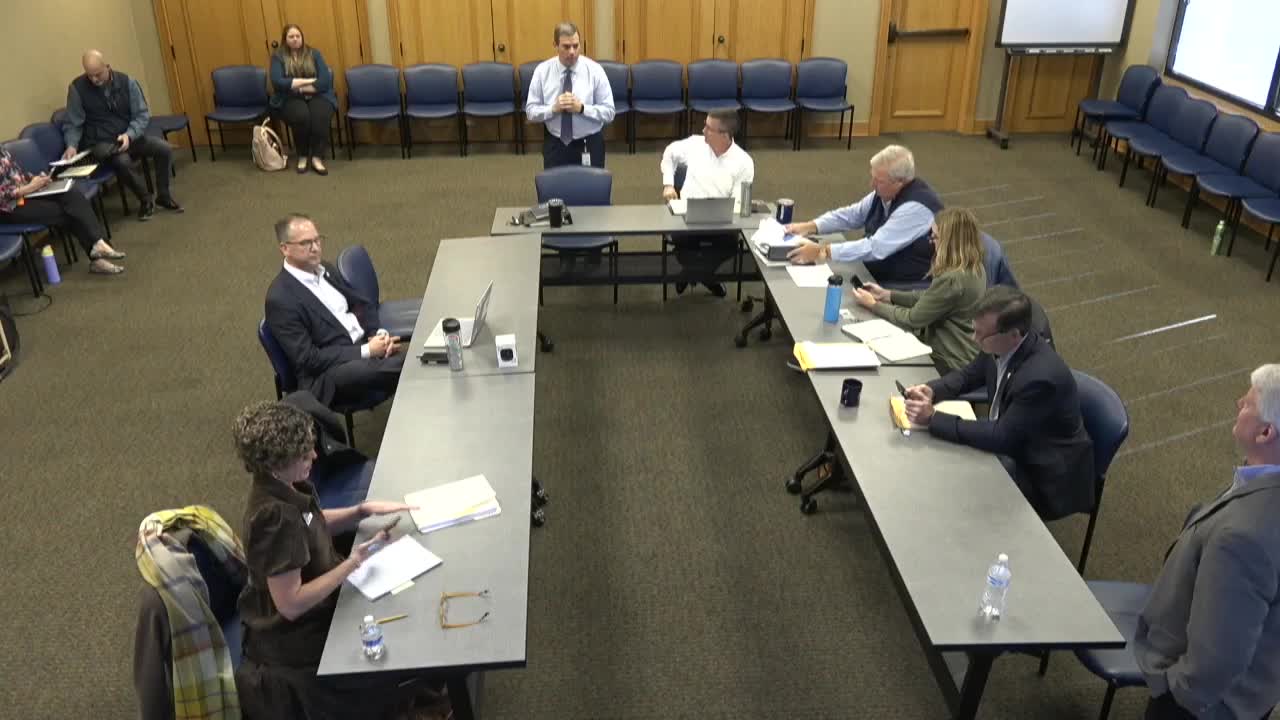Willdan advises sewer-rate increases after Brentwood sewer-capacity costs accelerate
January 09, 2025 | Brentwood, Williamson County, Tennessee
This article was created by AI summarizing key points discussed. AI makes mistakes, so for full details and context, please refer to the video of the full meeting. Please report any errors so we can fix them. Report an error »

Willdan, the city's water and sewer rate consultant, told Brentwood commissioners that the city's wastewater capital needs have moved forward and grown since the commission's last rate study and that the city should increase sewer rates now to preserve financial metrics and cash reserves.
Daryl Parker of Willdan said the wastewater capacity improvements previously scheduled in the 2028 timeframe were moved into 2026 and that the estimated borrowing to fund the capacity work rose to roughly $22 million from an earlier $13 million estimate. "These wastewater improvements... moved up to 2026, and the new number is $22,000,000," Parker said.
Willdan's five-year financial projection assumes about $46.5 million in utility capital expenditures across water and sewer; the firm modeled a revenue-bond-style issue to cover a portion of those costs and recommended a sequence of rate adjustments to keep the enterprise fund above the city's 180-day cash-on-hand target and to meet debt-service coverage goals. The firm noted that the city already has an adopted 2.5% water rate increase effective July 1; Willdan's plan would add a larger adjustment on the sewer side in the coming fiscal year (discussed in the briefing as a 5% increase) and then move to smaller, inflation-linked increases thereafter (roughly 2.5% in later years).
Consultants and staff emphasized the fiscal rationale: bringing the new debt on line earlier than previously forecast increases annual debt service, which, absent revenue adjustments, would cause enterprise cash balances and coverage ratios to fall below internal targets. Willdan showed status-quo projections in which revenues fall short of the fund's needs as the new debt arrives, and recommended the sewer-side increase to avoid drawing down reserves.
Willdan also presented comparative rate data showing Brentwood currently lying near the middle of peer utilities for a typical residential customer (about 6,000 gallons per month). The proposed adjustments would move the typical Brentwood combined bill upward by a few dollars per month initially, then stabilize at more modest inflationary increases. Willdan and staff noted that usage is generally inelastic at the system-wide scale and that the recommended increases are not expected to materially change water consumption patterns.
Next steps: Willdan and staff said the rate adjustments will be included in the FY2026 budget process. Staff expects to present a rate ordinance as part of budget adoption in May/June, with any new rates becoming effective on the August billing cycle (July 1 effective date for budgetary purposes). Commissioners asked questions about coverage ratios, days-cash targets and peer comparisons; Willdan said the city's financing team will refine borrowing structure and payment schedules during bond planning, which could slightly change modeled payments.
Ending
Willdan recommended the commission incorporate the sewer-side increase into the upcoming budget to protect coverage and cash targets, and staff said they will return formal ordinance language and updated financial tables during the budget adoption timeline.
Daryl Parker of Willdan said the wastewater capacity improvements previously scheduled in the 2028 timeframe were moved into 2026 and that the estimated borrowing to fund the capacity work rose to roughly $22 million from an earlier $13 million estimate. "These wastewater improvements... moved up to 2026, and the new number is $22,000,000," Parker said.
Willdan's five-year financial projection assumes about $46.5 million in utility capital expenditures across water and sewer; the firm modeled a revenue-bond-style issue to cover a portion of those costs and recommended a sequence of rate adjustments to keep the enterprise fund above the city's 180-day cash-on-hand target and to meet debt-service coverage goals. The firm noted that the city already has an adopted 2.5% water rate increase effective July 1; Willdan's plan would add a larger adjustment on the sewer side in the coming fiscal year (discussed in the briefing as a 5% increase) and then move to smaller, inflation-linked increases thereafter (roughly 2.5% in later years).
Consultants and staff emphasized the fiscal rationale: bringing the new debt on line earlier than previously forecast increases annual debt service, which, absent revenue adjustments, would cause enterprise cash balances and coverage ratios to fall below internal targets. Willdan showed status-quo projections in which revenues fall short of the fund's needs as the new debt arrives, and recommended the sewer-side increase to avoid drawing down reserves.
Willdan also presented comparative rate data showing Brentwood currently lying near the middle of peer utilities for a typical residential customer (about 6,000 gallons per month). The proposed adjustments would move the typical Brentwood combined bill upward by a few dollars per month initially, then stabilize at more modest inflationary increases. Willdan and staff noted that usage is generally inelastic at the system-wide scale and that the recommended increases are not expected to materially change water consumption patterns.
Next steps: Willdan and staff said the rate adjustments will be included in the FY2026 budget process. Staff expects to present a rate ordinance as part of budget adoption in May/June, with any new rates becoming effective on the August billing cycle (July 1 effective date for budgetary purposes). Commissioners asked questions about coverage ratios, days-cash targets and peer comparisons; Willdan said the city's financing team will refine borrowing structure and payment schedules during bond planning, which could slightly change modeled payments.
Ending
Willdan recommended the commission incorporate the sewer-side increase into the upcoming budget to protect coverage and cash targets, and staff said they will return formal ordinance language and updated financial tables during the budget adoption timeline.
View full meeting
This article is based on a recent meeting—watch the full video and explore the complete transcript for deeper insights into the discussion.
View full meeting
